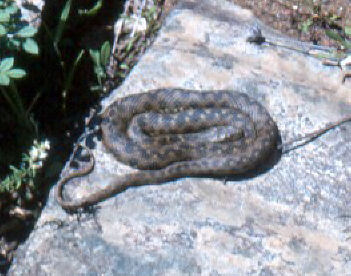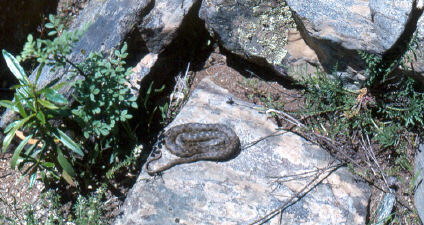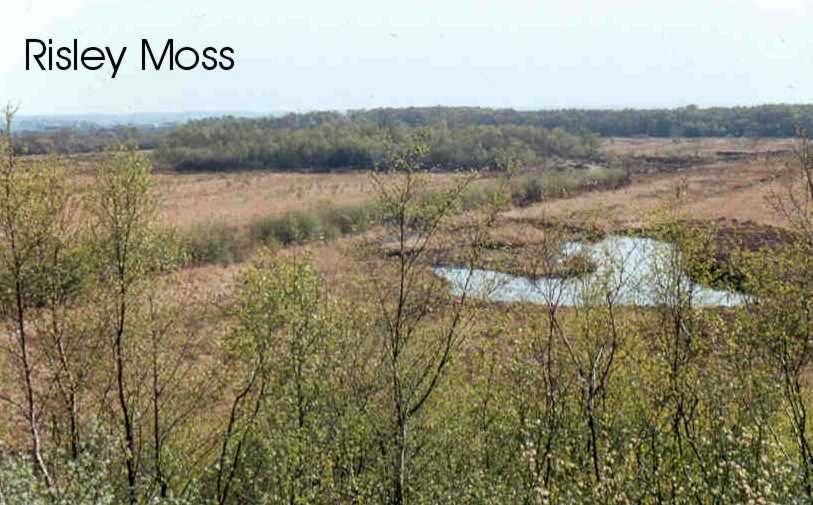
 |
WELCOME TO CHESHIRE BIODIVERSITY
|
|
| HOME | INTRODUCTION | SPECIES | HABITATS | PARTNERS | WHAT'S NEW | WHAT'S ON | OTHER INFO |
 Current Status
Current Status The adder or Northern viper (Vipera berus) has been recorded at five sites in Cheshire since 1995. It is considered to be of rare occurrence in the county although this may be due, in part, to a limited survey. Adders were recorded in the Cheshire region in the 1950s, although there seem to be only two records documented, neither of which make up any part of the post 1995 picture. Local unofficial sightings are commonplace but given that most turn out to be grass snakes (Natrix natrix), it is essential that these are looked into and the correct identification carried out. A Presence/Absence survey is required and results documented. Numbers and frequency can then be investigated in the future based on such results.
The most important records from Risley Moss LNR and National Trust properties on the Mid-Cheshire Ridge suggest that populations have survived in these areas for some time, and are relatively stable.
The adder is found in a variety and may crop up virtually anywhere, but dry grassland, scrub, heathland, moorland and open woodland are favourite. The vegetation cover and elevated nature of railway embankments may make this habitat the most important in terms of the widespread distribution of this species locally. Prey animals include viviparous lizard (Lacerta vivipara), slow worm (Anguis fragilis), various small mammals and the chicks of ground nesting birds. Therefore it is reasonable to expect two or more of the above at localities favoured by this species.
Adders are protected under the Wildlife and Countryside Act 1981 Schedule 5, Section 9, against intentional killing or injury. Trade in adders is also prohibited.
 |
 |
OBJECTIVES |
LOCAL TARGETS |
To plot the distribution within the county and investigate possible avenues regarding the conservation of this species, and to educate regarding the threats and misconceptions associated with the only British venomous snake. |
Targets awaited |
ACTIONS REQUIRED |
|
|
|
| 1997 - 2006 Action Completed |
|
BBC Wildfacts website - www.bbc.co.uk/nature/wildfacts/factfiles/279.shtml
Herpetological Consrevation Trust - www.herpconstrust.org.uk/
Join the Cheshire and Wirral Amphibian and Reptile Group, ask Julian Whitehurst (phone 01829 770797) for details.
Enter adder sightings and see the preliminary results on the HCT 'Add an Adder' project page - www.adder.org.uk
| LBAP Chair | Kat Walsh, Cheshire Wildlife Trust Phone: 01948 820728 |
HCIL (1995): The Herpetofauna Guide.
Langton et al. (1993): A review of British Herpetofauna populations in a wider context, Joint Nature Conservation Committee.
English Nature (1994): Species Conservation handbook.
HMSO (1981): The Wildlife and Countryside Act (1981).
HMSO (1995): Biodiversity: The UK Steering Group Report, Volume 1.
HMSO (1995): Biodiversity: The UK Steering Group Report, Volume 2.
| HOME | INTRODUCTION | SPECIES | HABITATS | PARTNERS | WHAT'S NEW | WHAT'S ON | OTHER INFO |
|